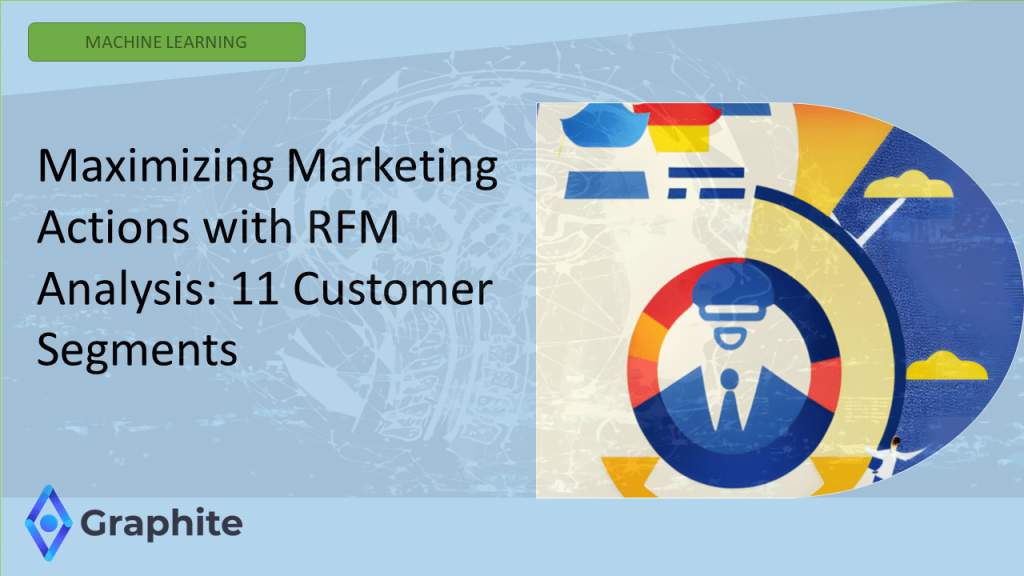As AI continues to evolve, new innovations and techniques emerge, offering even greater opportunities for organizations to leverage this powerful technology. One such innovation is sequential processing, a cutting-edge approach that is transforming the way AI systems operate. In this article, we will delve into the intricacies of sequential processing and its impact on corporate AI, exploring its benefits, implementation, and the latest advancements in this field.
Understanding Sequential Processing
Sequential processing refers to the ability of AI systems to process information in a sequential manner, mimicking the human thought process. In traditional AI models, inputs are processed simultaneously, resulting in a parallel execution of tasks. However, sequential processing enables AI systems to analyze inputs one at a time, allowing for a more logical and organized approach to decision-making.
By adopting a sequential mode, AI systems can break down complex problems into smaller, more manageable parts, effectively optimizing their problem-solving capabilities. This approach enables businesses to tackle intricate tasks that require a step-by-step analysis, enhancing overall efficiency and accuracy of AI-powered processes.
How Sequential Mode Enhances Efficiency
Incorporating sequential processing into AI systems offers several notable advantages in terms of efficiency. Firstly, it allows for the effective handling of sequential dependencies within tasks. By analyzing inputs one after the other, AI models can consider the context and interdependence between different inputs, leading to more accurate predictions and insights.
Furthermore, sequential processing enables AI systems to adapt dynamically to changes in the input stream. Instead of relying solely on fixed parameters, these systems can make real-time adjustments based on the sequential information they receive, offering greater flexibility and responsiveness.
Moreover, sequential mode enhances interpretability, allowing for a clearer understanding of the decision-making process. By breaking down complex tasks into sequential steps, AI algorithms can provide a transparent account of how they arrived at a particular outcome, enabling organizations to gain valuable insights and refine their strategies.
Implementing Sequential Mode in AI Systems
To take advantage of sequential processing, businesses need to implement appropriate methodologies and techniques into their AI systems. One such technique is recurrent neural networks (RNNs), which excel in processing sequential data. RNNs utilize feedback connections that enable information to flow not only directly from the input layer to the output layer but also through a hidden state, where the previous inputs are stored.
Another technique commonly used to implement sequential mode is long short-term memory (LSTM) networks. LSTMs are a type of RNN that address the vanishing gradient problem, which occurs when traditional RNNs struggle to capture long-term dependencies in the data sequence. By incorporating LSTM units, AI algorithms can better capture and retain relevant information throughout the sequential processing, leading to more robust and accurate predictions.
It is worth mentioning that implementing these techniques can be complex and resource-intensive. However, with the advent of no-code predictive and prescriptive analytics tools like Graphite Note, businesses of all sizes can now incorporate sequential processing into their AI systems without the need for extensive programming knowledge. Graphite Note offers a user-friendly interface that empowers organizations to build and deploy AI models utilizing sequential processing techniques, driving operational excellence and unlocking new insights.
Harnessing the Power of Feedback Loops
Feedback loops play a crucial role in AI development, enabling iterative improvements and performance optimizations. By leveraging feedback-loop mode, organizations can enhance AI models, ensuring they adapt to changing conditions and deliver consistent value. In this section, we will explore the importance of feedback loops in AI systems and how they can be utilized to maximize performance.
The Importance of Feedback-loop Mode in AI Development
Feedback-loop mode enables AI models to continuously learn and improve based on user interactions and real-world feedback. This iterative process enhances the accuracy and effectiveness of AI systems, allowing them to adapt to changing contexts and user preferences. By actively seeking feedback and incorporating it into the model’s training, businesses can refine their AI capabilities and deliver more personalized and precise results.
Feedback-loop mode also plays a vital role in addressing biases and shortcomings in AI models. By collecting user feedback and monitoring the performance of AI systems, organizations can identify and rectify biases, ensuring fair and unbiased decision-making. This is particularly important in corporate AI applications where decisions may have significant implications for individuals and organizations.
Optimizing Performance Through Feedback Loops
Feedback loops offer numerous opportunities to optimize the performance of AI models. One such opportunity is user feedback integration. By actively seeking feedback from users, organizations can gain valuable insights into the strengths and weaknesses of their AI systems. This feedback can then be used to fine-tune the model, improving its accuracy and addressing any user concerns.
Furthermore, feedback loops facilitate continuous model monitoring and evaluation. By monitoring various performance metrics and analyzing user interactions, organizations can detect anomalies or areas of improvement in real-time, proactively addressing them to maintain optimal performance.
Additionally, feedback loops enable businesses to stay up to date with evolving user needs and market demands. By capturing and analyzing feedback, organizations can detect emerging patterns and trends, allowing them to adapt their AI systems to cater to changing requirements effectively.
Exploring Standalone AI Functionality
Standalone AI functionality is revolutionizing the corporate landscape by offering self-sufficient AI systems capable of independent decision-making. In this section, we will delve into the advantages, limitations, and implications of standalone AI, shedding light on its impact on corporate integration and decision-making processes.
Advantages and Limitations of Standalone Mode
- Advantages:
- Increased Autonomy: Standalone AI systems have the capability to make decisions independent of human intervention, enabling organizations to automate complex tasks and accelerate processes.
- Real-time Decision-making: By eliminating the need for human approval, standalone AI models can make decisions swiftly, enabling businesses to respond to dynamic market conditions and opportunities.
- Scalability and Efficiency: Standalone AI systems can handle large volumes of data and perform complex computations, allowing organizations to scale their operations and achieve higher efficiency.
- Limitations:
- Ethical Considerations: The use of standalone AI raises ethical concerns regarding accountability, transparency, and potential biases. Organizations must establish robust governance frameworks and ensure responsible AI practices.
- Contextual Understanding: Standalone AI systems might struggle to comprehend contextual nuances, leading to potential misunderstandings or inappropriate decisions in complex situations.
- Complex Decision-making: Certain decisions may require human judgment, intuition, or ethical considerations that standalone AI systems may not possess.
How Standalone Mode Impacts AI Integration
Standalone AI functionality introduces new paradigms in AI integration, with implications across various domains. One area significantly impacted is decision-making processes. While standalone AI systems offer greater autonomy, organizations must carefully evaluate the decision domain and determine the appropriate level of AI involvement. By finding the right balance between human expertise and AI capabilities, organizations can effectively leverage standalone AI for improved decision-making, reducing time and resource constraints.
Furthermore, standalone AI can integrate seamlessly with existing business processes, serving as a valuable tool for augmenting human potential. By automating routine tasks and providing real-time insights, standalone AI frees up human resources, allowing employees to focus on higher-value and more strategic activities, thus boosting overall productivity.
It is important to note that integrating standalone AI is not without challenges. Organizations must invest in the appropriate infrastructure, training, and change management initiatives to ensure a smooth transition. Additionally, comprehensive testing and validation processes are necessary to verify the reliability, fairness, and safety of standalone AI systems.
Embracing the Latest AI Best Practices
As AI technologies advance, it becomes imperative for businesses to embrace the latest best practices to stay ahead of the curve. In this section, we will explore key strategies for implementing emerging AI practices, enabling organizations to harness the full potential of this transformative technology.
Key Strategies for Implementing Emerging AI Practices
When implementing emerging AI practices, businesses should adopt a strategic approach to maximize value and minimize risks. Here are some key strategies to consider:
- Clear Business Objectives: Define clear and specific objectives aligning with your organization’s strategic vision to ensure that the implementation of emerging AI practices directly contributes to business goals.
- Data Quality and Governance: Prioritize data quality and establish robust governance frameworks to ensure that the AI models are built on accurate, relevant, and unbiased data.
- Domain Expertise Integration: Collaborate with domain experts and leverage their insights to enhance the performance and applicability of AI models in specific industry contexts.
- Continuous Learning and Adaptation: Foster a culture of continuous learning and improvement, encouraging experimentation, and iterating on AI models to achieve better outcomes over time.
- Ethical Considerations and Transparency: Ensure responsible and ethical AI practices by addressing potential biases, establishing fairness measures, and promoting transparency and accountability throughout the AI lifecycle.
- Robust Infrastructure and Scalability: Invest in scalable infrastructure that can handle the increasing demands of AI systems, ensuring seamless integration and optimal performance.
Staying Ahead with Cutting-Edge AI Techniques
As the field of AI advances rapidly, staying abreast of and implementing cutting-edge AI techniques is essential for organizations aiming to maintain a competitive edge. Exploring newer technologies such as deep learning, reinforcement learning, and natural language processing can unlock new possibilities and open doors to transformative applications.
Moreover, organizations can leverage advanced AI platforms like Graphite Note, a no-code predictive and prescriptive analytics tool, to simplify the implementation of cutting-edge AI techniques. Graphite Note empowers users with intuitive interfaces and pre-built AI modules, eliminating the need for extensive coding knowledge and enabling organizations to expedite the integration of advanced AI practices into their operations.
Conclusion
Sequential processing, feedback loops, standalone AI functionality, and emerging AI best practices represent the latest innovations reshaping the corporate landscape. By understanding and harnessing these innovations, organizations can unlock new possibilities, drive operational efficiency, and make informed decisions. As AI continues to evolve, embracing the latest advancements and leveraging tools like Graphite Note will be critical for organizations looking to thrive in the era of corporate AI.
Ready to take the next step in leveraging the latest AI innovations for your business? Graphite Note is here to transform the way you approach machine learning. With our no-code predictive analytics platform, your team can predict business outcomes with precision, turn data into action plans effortlessly, and drive growth without the need for AI expertise. Experience the power of Graphite Note and see how our comprehensive suite of tools can enhance your marketing, sales, operations, and data analysis. Don’t let a lack of a data science team hold you back. Request a Demo today and unlock the full potential of your data with Graphite Note.




